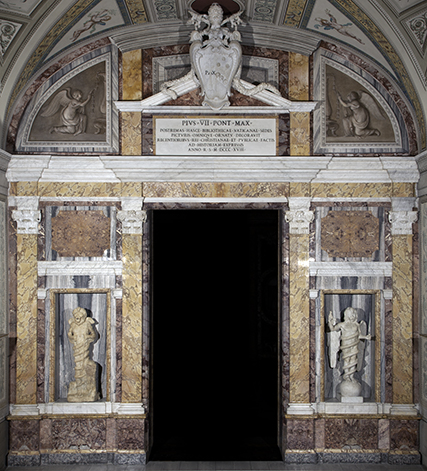Our Actions
The Vatican Museums hold an impressive collection of artworks. They cover several centuries and need continuous care and lots of love.
And the Patrons are there to do this. We chose every year a work of art (ore more) and finance its conservation or its restoration. We can visit the ateliers, situated in the mysterious underground of the Vatican. It’s quite an experience.
Leaving a demonstration of the talent and accomplishments of many artists over the centuries is a great gift for future generations. For this reason the conservation and restoration of the artworks present in the Vatican Museums is the core action of our Chapter. You can admire some of these accomplishments. They cover a long period of time, from the Ist century (Prophan Museum) to the XXth (Matisse Room).
Our teams of restorers in the Museums are excellent.
Art Conservation and Restoration
These two actions represent any attempt to conserve and repair architecture, paintings, drawings, prints, sculptures, and objects of the decorative arts (furniture, glassware, metalware, textiles, ceramics, and so on) that have been adversely affected by negligence, willful damage, or, more usually, the inevitable decay caused by the effects of time and human use on the materials of which they are made.
The term art conservation denotes the maintenance and preservation of works of art and their protection from future damage and deterioration.
Art restoration, by contrast, denotes the repair or renovation of artworks that have already sustained injury or decay and the attempted restoration of such objects to something approaching their original undamaged appearance. The techniques and methods of art conservation and restoration go hand in hand and became the province of trained professionals in the 20th century. They have become an increasingly important aspect of the work not only of museums but also of civic authorities and all those concerned with works of art, whether artists, collectors, or museum goers.
The methods of art restoration used in earlier periods were closely linked to and limited by the art production techniques known at the time. Advances in science and technology and the development of conservation as a profession in the 20th century have led to safer and more effective approaches to studying, preserving, and repairing objects.
Modern conservation practice adheres to the principle of reversibility, which dictates that treatments should not cause permanent alteration to the object. Art conservation has become an important tool of research; it is standard practice among professional conservators to document treatments with photographs and written reports.
It is obvious that more the time goes, more the works of art become old and they need conservation and restoration.
In our Vatican Museums the nature of the restorations are multiple: architecture, paintings, sculptures, fabrics, jewelry: everything is there. And everything is a moving memory of the generations that have preceded us. It is up to us to preserve it.

Entrance of the Vatican Profane Museum


